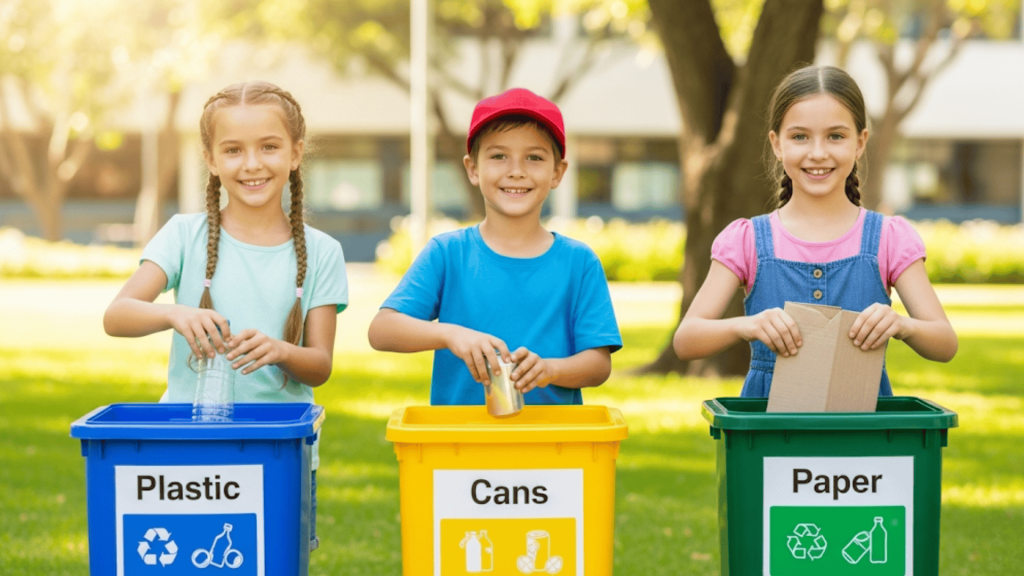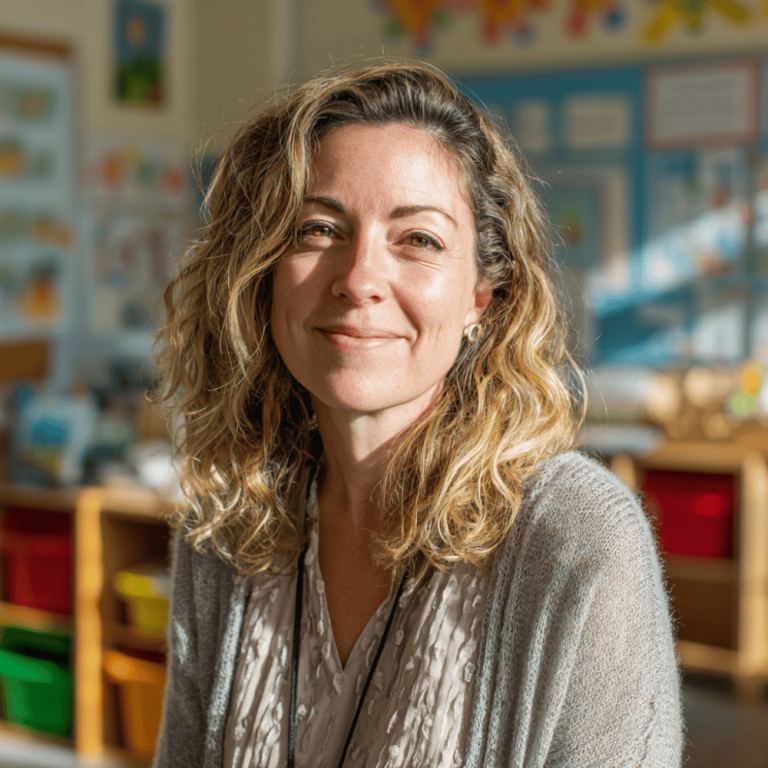Teaching kids about recycling is one of the simplest ways to help them understand their role in caring for the planet.
Children are naturally curious, and when they see how everyday items can be given a new life, it encourages both creativity and responsibility.
What makes recycling for kids especially powerful is how it connects real actions, like rinsing a bottle or reusing a jar, to bigger ideas about saving energy and protecting nature.
The earlier kids start learning, the easier it becomes for them to carry these habits into the future. Let’s begin with the basics and see how recycling works.
What is Recycling?
Recycling is when we take something old and turn it into something new. Instead of throwing things away, we give them another life.
Think about it like this:
- An empty soda can doesn’t just disappear when you toss it in the bin.
- If it goes in the recycling bin, it can come back as a brand-new can.
- A stack of old newspapers might get turned into fresh paper you’ll write on at school.
The process looks a bit like a circle:
Trash → Recycling Bin → Recycling Center → New Product
What is recycling for kids? They understand it best when they see it in action. You can watch what happens at a recycling center, or even try a small example at home, like turning a jar into a pencil holder.
Why Recycling is Important for Kids
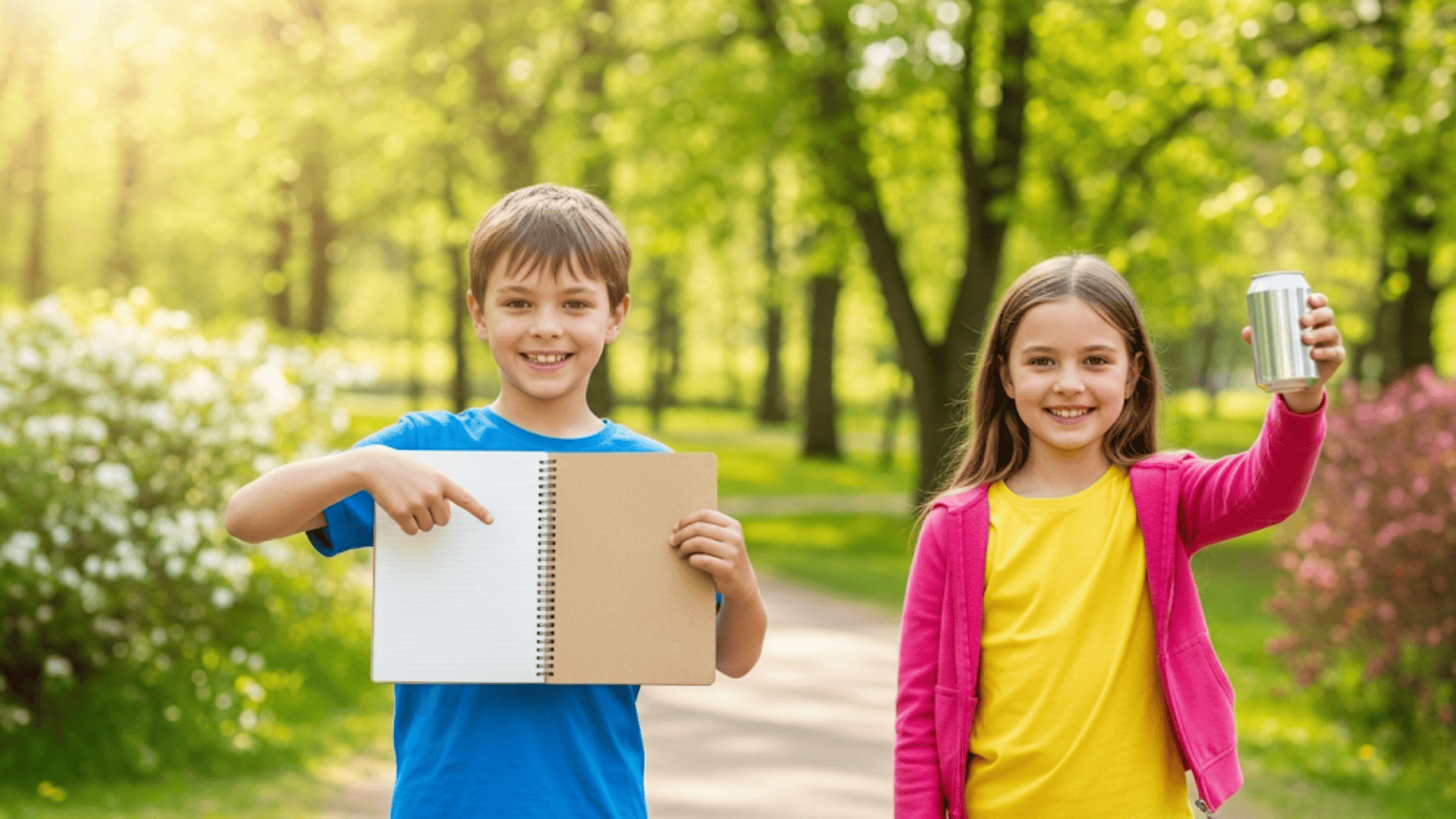
Recycling isn’t just about tossing stuff in the right bin. It’s about protecting the world you live in. When you recycle, you help save important resources like trees, water, and energy.
Here’s why it matters:
- Save trees: Recycling paper means fewer trees need to be cut down.
- Save water: Making things from recycled materials uses less water than making them from scratch.
- Save energy: Recycling uses way less energy than creating new products.
It also keeps our planet cleaner. Less trash ends up in landfills, which means less pollution in the air, soil, and water.
Some fun facts to remember:
- Recycling one can saves enough energy to power a TV for 3 hours.
- Recycling one glass bottle can keep a 100-watt light bulb glowing for 4 hours.
- Recycling ten plastic bottles can make a brand-new T-shirt.
Kids love these quick facts because they can picture the impact. The more you recycle, the bigger difference you make.
The 3 Rs (Reduce, Reuse, Recycle)
The “3 Rs” are a simple way to remember how to care for the planet. Each one is easy to follow in your daily life.
Reduce: This means cutting down on waste before it even starts. Using a refillable water bottle or packing lunch in reusable containers helps you avoid single-use plastics and extra trash.
Reuse: Reusing gives old items a second purpose. A glass jar can turn into a pencil holder, and an old T-shirt can be used as a cleaning rag instead of being thrown away.
Recycle: Recycling takes items like bottles, cans, and paper and turns them into new products. When you sort and rinse what goes in the bin, it makes the recycling process smoother and more effective.
Once kids practice these three steps, they start to see recycling as an easy habit, not a chore.
How to Recycle at Home and School
Recycling becomes a habit when you make it part of your everyday routine. These steps will help you keep it simple and effective, whether you’re at home or in the classroom:
Step 1: Set Up Recycling Bins
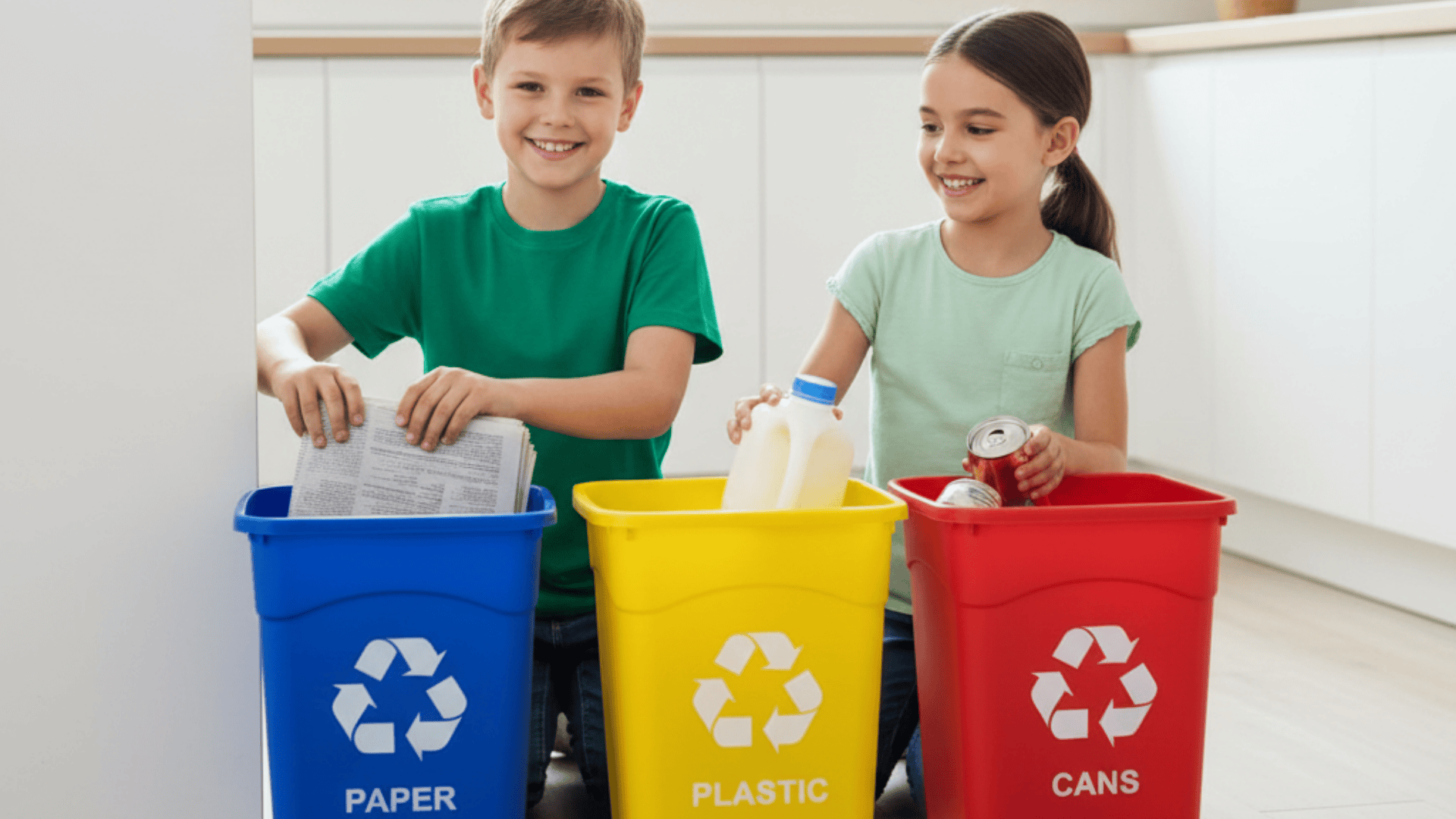
Start by choosing separate bins for different materials like paper, plastic, glass, and metal. You can even use boxes or old containers if you don’t have bins. Add clear labels or color codes to each one so everyone knows where things should go.
Step 2: Sort Items Correctly
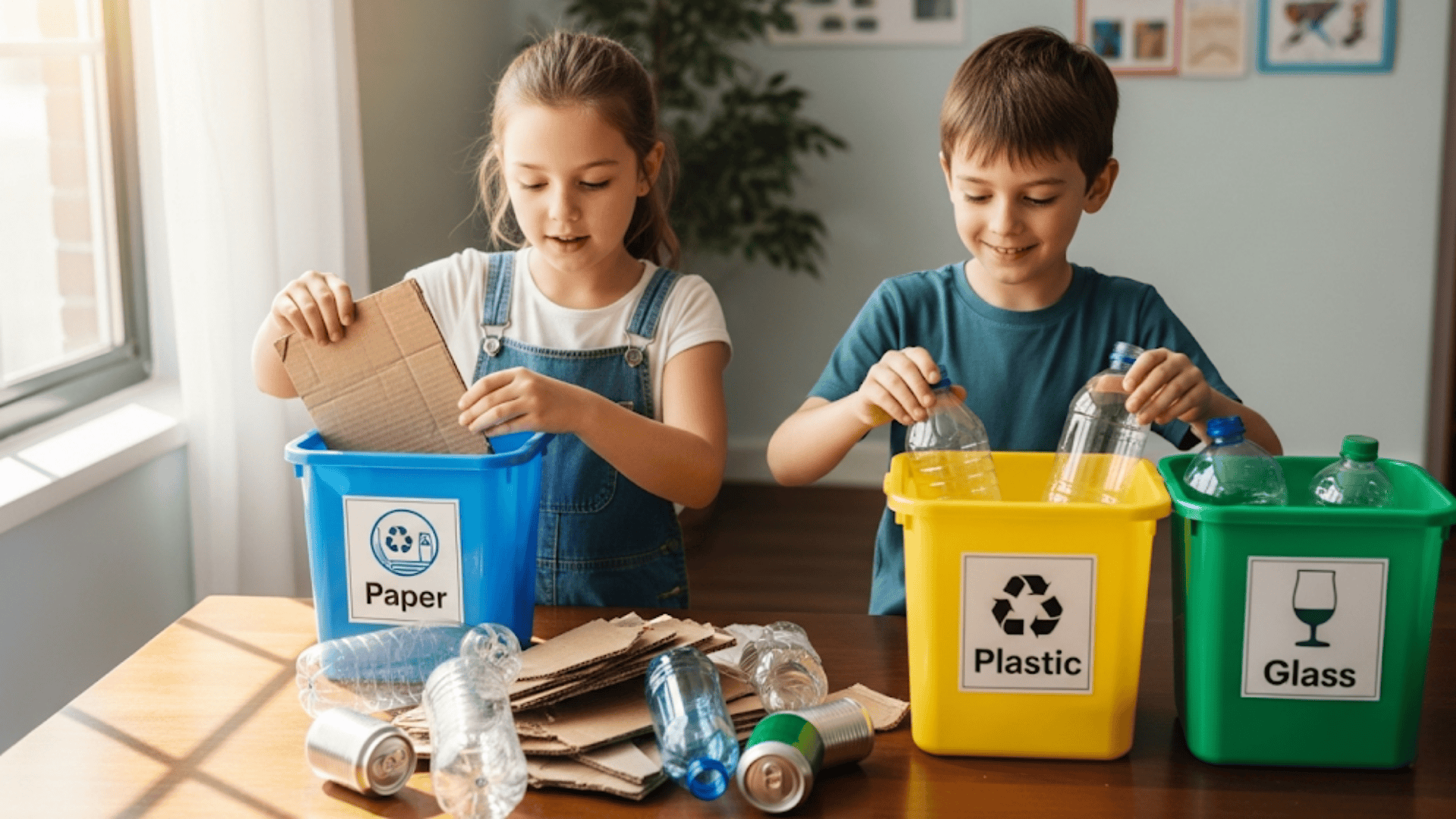
When you finish using something, take a moment to put it in the right bin. Paper goes with paper, cans with cans, and plastic containers with other plastics. Sorting right away makes it easier to recycle properly and saves time later.
Step 3: Rinse Before Recycling
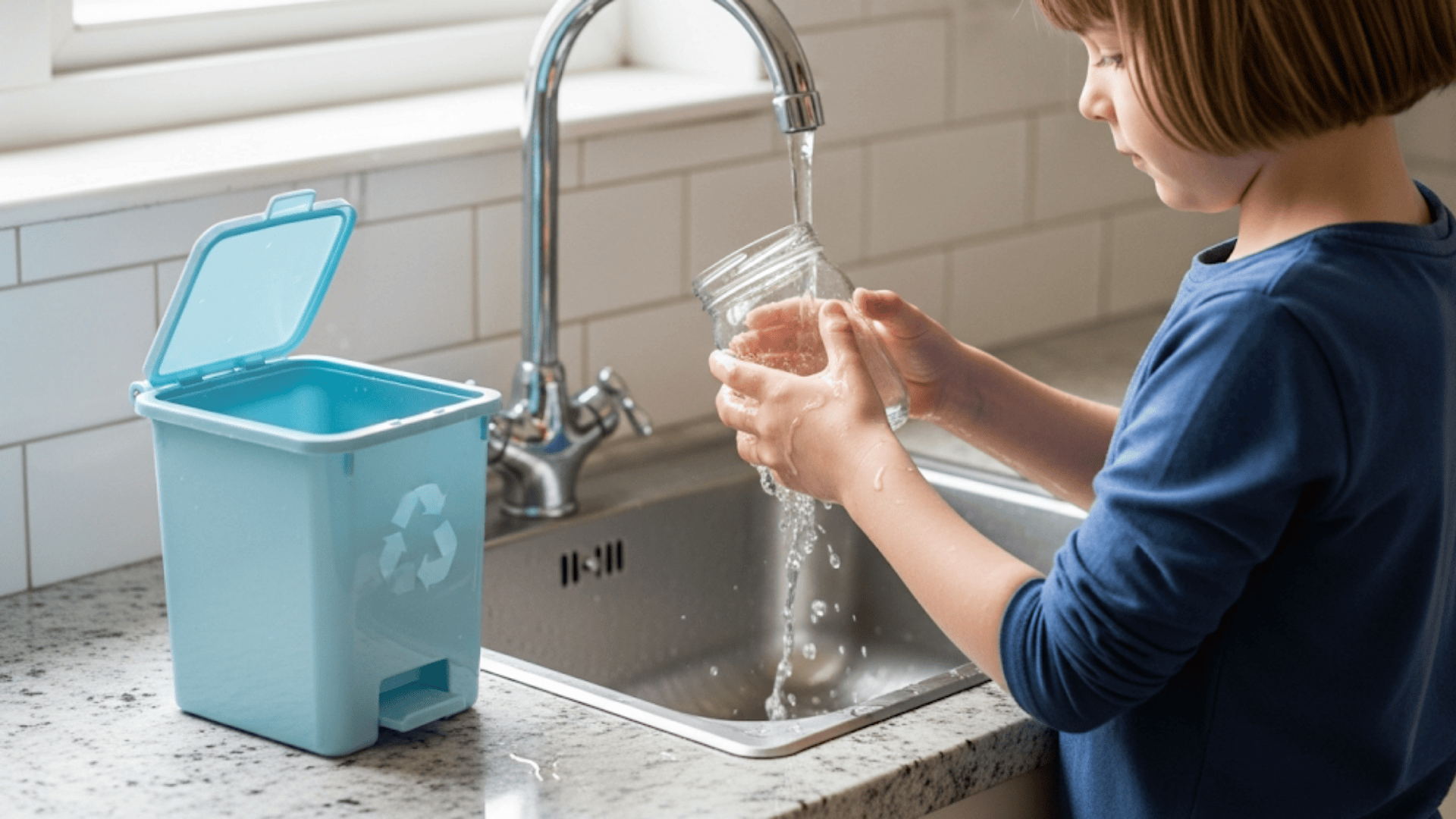
Before dropping bottles, cans, or jars in the bin, rinse them quickly. A clean item won’t spread food or liquid onto the rest of the recycling. This small step makes a huge difference in keeping bins fresh and usable.
Step 4: Take It to the Right Place
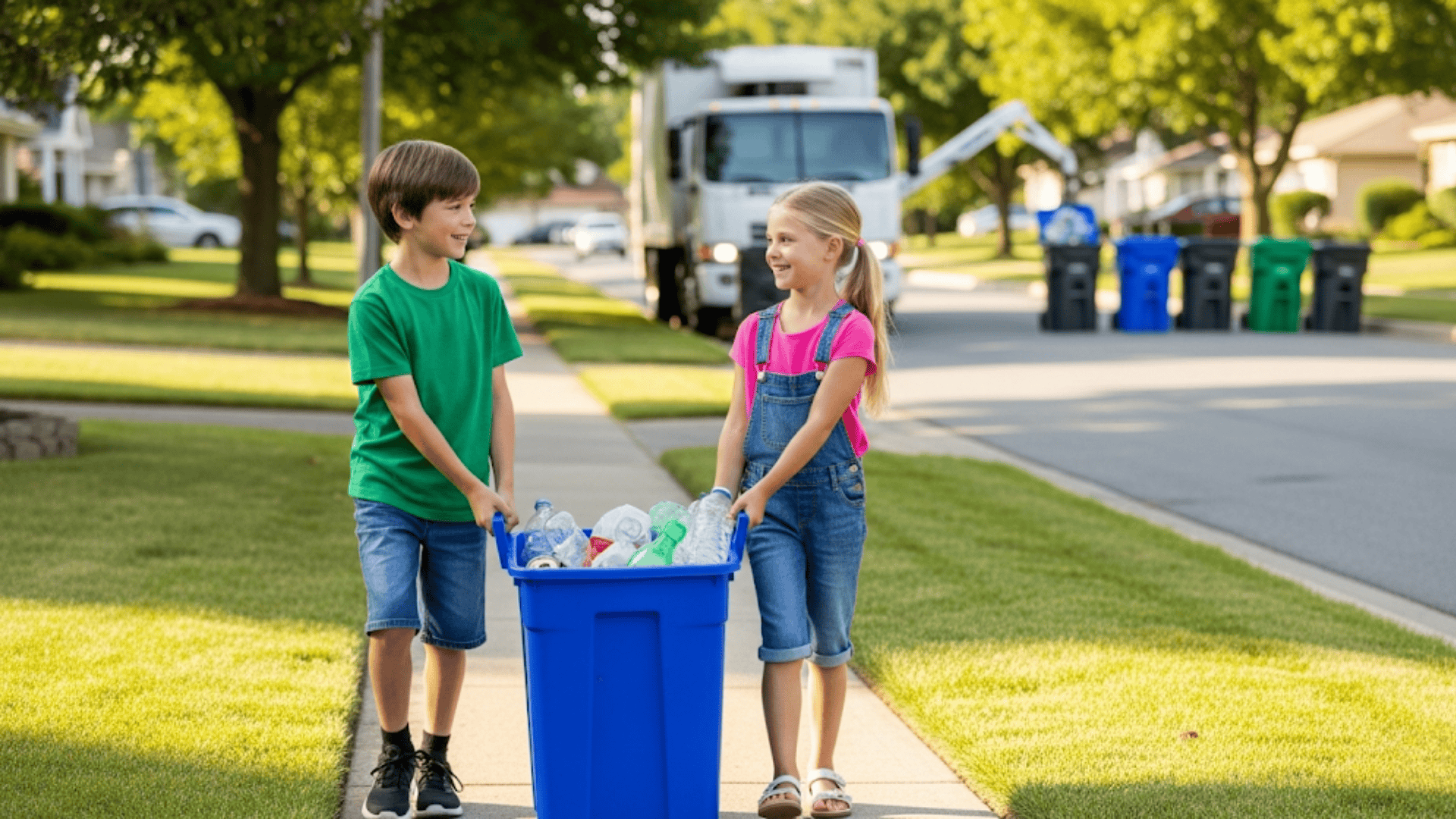
At home, put your bins out on the curb on collection day so the recycling truck can pick them up. If your town doesn’t collect, bring them to a local recycling center.
At school, place recyclables in the correct container or hand them in during collection times.
When you follow these steps regularly, recycling stops feeling like a chore. It becomes a simple habit that helps both you and the planet.
What Can Kids Recycle?
Not everything belongs in the trash. A lot of everyday items can be recycled and turned into something new. Here’s a quick guide you can follow:
| Category | Examples | Tips |
|---|---|---|
| Paper | Newspapers, notebooks, cardboard | Keep it clean and dry. |
| Plastic | Bottles, jugs, containers | Rinse before recycling. |
| Glass | Jars, bottles | Remove food and liquids. |
| Metal | Soda cans, soup cans, tins | Recycle them empty. |
| Non-Recyclables | Greasy pizza boxes, food scraps, plastic bags | Trash or compost instead. |
Kids enjoy using tables like this because it feels like a sorting game. It makes recycling choices clear and quick.
Fun Recycling Activities for Kids
Recycling doesn’t have to feel like work. When you turn it into a game or project, kids stay interested and have fun learning at the same time.
1. Crafts
Old materials can be turned into something new and creative. Cardboard tubes can become toy robots, plastic bottles can be made into bird feeders, and scraps of paper can turn into colorful art projects. These hands-on ideas help kids see recycling in action.
2. Games
Sorting can feel like play when it’s done as a challenge. Try a recycling relay race, a bingo board with recyclable items, or a scavenger hunt to find recyclables around the house or school.
Games like these keep kids active while teaching them good habits.
3. Composting
Food waste doesn’t need to go in the trash. You can start a simple compost bin with fruit peels, veggie scraps, and coffee grounds. Over time, it breaks down into rich soil you can use in the garden. Kids enjoy seeing how food scraps turn into something useful.
4. School Projects
Recycling also fits into learning at school. Kids can design posters, create science fair projects about waste reduction, or organize recycling relays with classmates. These projects make recycling a shared effort and build teamwork skills.
Kids remember recycling better when they connect it with fun activities. The more playful it feels, the more likely they are to keep doing it.
Recycling Facts for Kids
Did you know recycling saves energy, water, and trees in ways you can see every day? Here are some quick facts to remember:
- Recycling one aluminum can saves enough energy to power a TV for three hours.
- A glass bottle can be recycled again and again without losing quality.
- Recycling ten plastic bottles can make a brand-new T-shirt.
- Paper can only be recycled about five to seven times before the fibers wear out.
- Recycling one ton of paper saves about 17 trees and 7,000 gallons of water.
These little facts make it easy to see how every item you recycle has a real impact.
Family & Community Recycling Ideas
Recycling doesn’t just happen at home. It works best when families and communities join in together. Here are some simple ways to make it part of daily life.
1. Make a Chore Chart: Give each family member a recycling task. One person sorts the plastics, another rinses bottles, and someone else takes the bins outside. Kids can earn stickers or stars for finishing their job.
2. Join Local Programs: Schools and neighborhoods often run recycling drives or collection days. Getting kids involved shows them that recycling is a team effort, not just something done at home.
3. Use Apps or Websites: Some apps let kids track their recycling progress. They can see how much energy or water they’ve saved and even collect fun facts along the way. This makes recycling feel like a game.
When families and communities work together, kids see recycling as something bigger and more meaningful. It feels less like a chore and more like a shared goal.
Wrapping Up
Recycling for kids is more than sorting cans and bottles; it’s about building habits that last a lifetime. When children learn the value of protecting resources early, they grow into adults who make thoughtful choices about waste and the environment.
One unique way to keep them motivated is by celebrating small milestones, like how many pounds of paper your family saves each month.
Turning progress into something visible keeps kids proud of their impact and eager to do more.
If you’re ready to keep teaching simple, practical lessons that make a difference, check out my other blogs filled with everyday tips and ideas for families.


